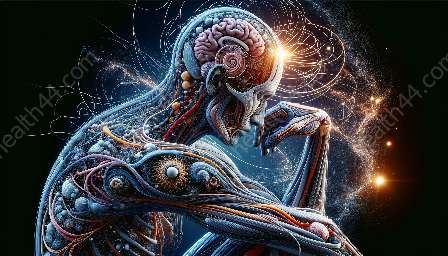The genitourinary system encompasses a complex network of organs and structures vital for reproduction, waste elimination, and hormone regulation. Understanding its anatomy is crucial for medical professionals and students within the fields of anatomy, health education, and medical training.
Overview of the Genitourinary System
The genitourinary system, also known as the urogenital system, consists of the reproductive and urinary organs. These organs work together to ensure proper urine production and elimination, as well as facilitate reproduction and the production of sex hormones.
Anatomy of the Genitourinary System
The genitourinary system includes various organs and structures, such as the kidneys, ureters, urinary bladder, urethra, testes, epididymis, vas deferens, prostate gland, seminal vesicles, and the penis in males, and the ovaries, fallopian tubes, uterus, vagina, and vulva in females.
Kidneys
The kidneys are bean-shaped organs located on either side of the spine. They are responsible for filtering waste products and excess fluids from the blood, which are then excreted as urine.
Ureters
The ureters are narrow tubes that transport urine from the kidneys to the urinary bladder for storage.
Urinary Bladder
The urinary bladder serves as a reservoir for urine until it is expelled from the body through the urethra.
Urethra
The urethra is the tube responsible for transporting urine from the bladder to the outside of the body. In males, it also serves as the passageway for semen during ejaculation.
Male Reproductive System
In males, the reproductive system includes the testes, epididymis, vas deferens, prostate gland, seminal vesicles, and the penis. These organs work together to produce and transport sperm, as well as to facilitate the process of ejaculation.
Female Reproductive System
The female reproductive system consists of the ovaries, fallopian tubes, uterus, vagina, and vulva. These structures are involved in the production of eggs, fertilization, pregnancy, and childbirth.
Functions of the Genitourinary System
The genitourinary system performs several crucial functions, including urine production and excretion, hormone regulation, and reproduction. Additionally, the kidneys play a vital role in maintaining the body's fluid and electrolyte balance, as well as blood pressure regulation.
Urine Production and Excretion
One of the primary functions of the genitourinary system is to produce urine by filtering waste products and excess fluids from the blood. This urine is then excreted from the body through the urinary system.
Hormone Regulation
The genitourinary system also plays a significant role in hormone regulation, particularly in the production of sex hormones such as testosterone and estrogen, which are essential for reproductive function and secondary sexual characteristics.
Reproduction
In addition to urine production and hormone regulation, the genitourinary system is crucial for reproduction. It facilitates the production and transportation of sperm in males and eggs in females, as well as the process of fertilization and pregnancy.
Clinical Relevance
Understanding genitourinary anatomy is essential for medical professionals, as it forms the basis for diagnosing and treating a wide range of urogenital conditions and diseases. Medical training in this area not only involves learning the anatomical structures but also understanding their functions and the potential disorders that may affect them.
Urogenital Disorders
Various disorders and diseases can affect the genitourinary system, including kidney stones, urinary tract infections, prostate cancer, ovarian cysts, and infertility, among others. Medical professionals must be well-versed in genitourinary anatomy to accurately diagnose and manage these conditions.
Conclusion
The genitourinary system is a complex network of organs and structures vital for urine production and elimination, hormone regulation, and reproduction. A thorough understanding of its anatomy is crucial for professionals and students in the fields of anatomy, health education, and medical training, as it forms the foundation for comprehensive knowledge and clinical practice within the realm of urogenital health.


